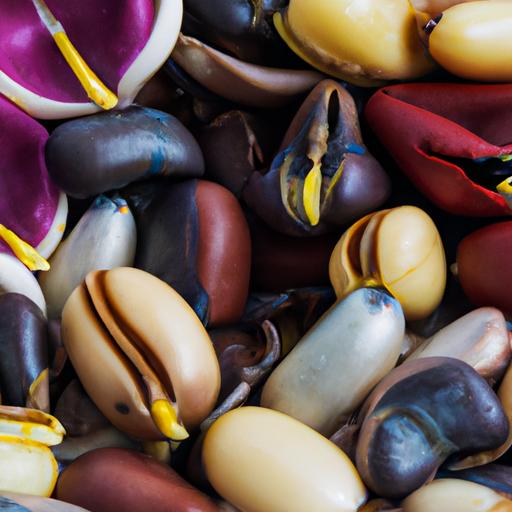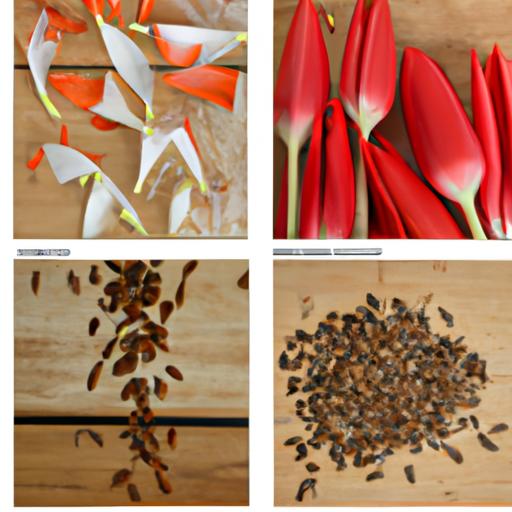Learn how to collect tulip seeds like a pro with our step-by-step guide. Expand your tulip collection and enjoy vibrant blooms in your garden.
Organic gardening tips and expert advice from Rowe Organic
Introduction
Are you an avid gardener looking to expand your tulip collection? If so, learning how to collect tulip seeds is a valuable skill that can help you propagate and grow a variety of beautiful tulips. In this comprehensive guide, we will walk you through the process of collecting tulip seeds, providing you with the knowledge and techniques needed to succeed. So, grab your gardening gloves and let’s dive in!

Understanding Tulip Seeds
Before we delve into the seed collection process, let’s take a moment to understand the basics of tulip seeds. Tulips are typically propagated through bulbs, but they also produce seeds as a means of reproduction. These seeds come in various shapes, sizes, and colors, each unique to the tulip variety. Understanding the characteristics of tulip seeds is crucial for successful collection and propagation.

Step-by-Step Guide on Collecting Tulip Seeds
Step 1: Gathering the Necessary Tools and Materials
To collect tulip seeds effectively, it’s essential to have the right tools and materials at hand. You will need:
- Pruning shears or scissors
- Paper bags or envelopes
- Plant labels or markers
- Small mesh screens or sieves
Step 2: Identifying the Right Time for Seed Collection
Tulip seeds are usually ready for collection after the bloom has faded and the petals have fallen off. This is typically during the summer months. Keep a close eye on your tulip plants, as the timing may vary depending on the tulip variety and growing conditions.
Step 3: Removing the Seed Pods
Once the tulip blooms have wilted, carefully inspect the plant for seed pods. These pods are located just below the flower head and contain the seeds. Use your pruning shears or scissors to remove the seed pods, ensuring that you don’t damage the stalk or surrounding foliage.
Step 4: Extracting the Seeds
After removing the seed pods, place them in a paper bag or envelope. Gently crush the pods by hand to release the tulip seeds. The seeds will be small, dark, and often resemble irregularly shaped grains. Be cautious not to crush the seeds while extracting them.
Step 5: Drying and Storing the Seeds
Once the tulip seeds are extracted, spread them out on a small mesh screen or sieve. Allow them to air dry in a cool, dry place for a few days. Once completely dry, transfer the seeds into labeled envelopes or containers, ensuring they are properly labeled with the tulip variety and collection date. Store the seeds in a cool, dark place until you are ready to plant them.
FAQ about Collecting Tulip Seeds
Q: Can I collect tulip seeds from any tulip variety?
A: While it is possible to collect seeds from most tulip varieties, it’s important to note that not all seeds will produce identical offspring. Some tulip varieties may not produce viable seeds, while others may produce seeds that differ in color or form from the parent plant.
Q: How long can I store tulip seeds before planting them?
A: If stored properly in a cool, dark place, tulip seeds can remain viable for up to two years. However, it’s best to plant them as soon as possible to ensure optimal germination rates.
Q: Can I collect tulip seeds from hybrid varieties?
A: Yes, you can collect seeds from hybrid tulip varieties. However, keep in mind that the resulting offspring may not exhibit the same characteristics as the parent plant due to genetic variations.
For more frequently asked questions and expert advice on tulip seed collection, visit our Rowe Organic FAQ page.
Conclusion
Congratulations! You’ve successfully learned how to collect tulip seeds like a pro. By following this step-by-step guide, you can now expand your tulip collection and enjoy a vibrant array of blooms. Remember, proper seed collection techniques are essential for successful tulip propagation. So, put your newfound knowledge to use and start cultivating your own tulip garden today!
Rowe Organic: Your green sanctuary for expert tips and inspiration in organic gardening. Cultivate, nurture, and grow naturally.
For more information on plants and gardening, visit Rowe Organic’s Plants section.
Looking to explore different types of plants? Check out our informative article on Types of Corms Plants.
Note: Internal links have been added to provide readers with easy access to relevant information on the Rowe Organic website.
